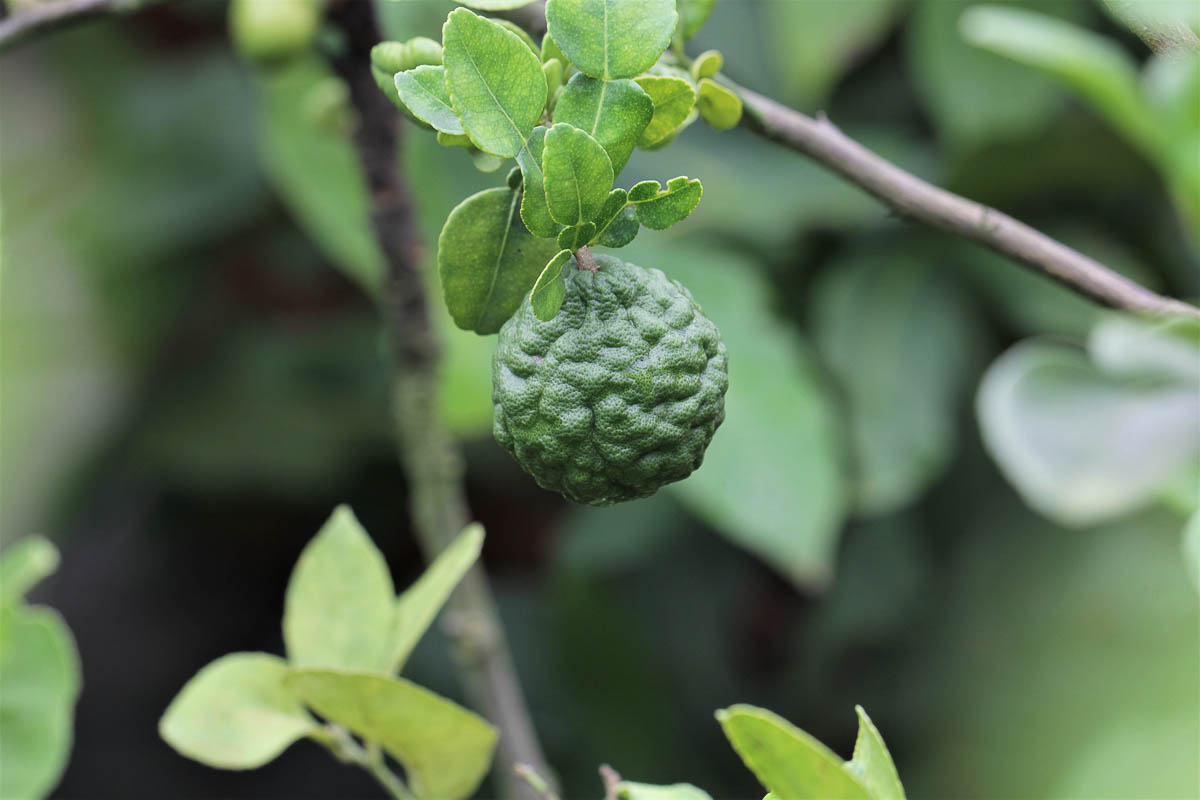Limau Purut
Limau Purut (Citrus hystrix)
Other common names: Limau Purut, 箭叶橙, Kaffir Lime

Limau Purut fruit rinds and leaves are key ingredients in several Southeast Asian dishes, with the most famous being Thai Tom Yum. Unfortunately, the fruit itself is rather dry and produces very little pulp and juice.
As a perennial tree, it is a common sight in edible gardens. It is usually grown in true ground or large pots, and is pruned regularly into a medium- or large-sized shrub.
The plant is part of the citrus family, which also includes Lime. All citrus plants are host plants for the lime butterfly and can be part of the planting palette for biodiversity-attracting gardens.
Sun and soil needs:
_jacquelinechua.jpg)
This tree does best in full sun gardens with a minimum of 6 hours of direct sunlight. This plant can also grow in areas with 6 or more hours of indirect sunlight, but growth will be slow and the plant will produce less fruit.
Plants do best in pots with loamy soil at least 50cm deep, or in true ground. These plants are vulnerable to root rot, so ensure that your pots drain well, and that your soil has plenty of organic matter to let the roots breathe.
Sowing Seeds
Seeds can be sown directly into pots or the ground. Because the plant eventually grows into a tree, it is easier to grow a few seedlings in separate pots before selecting the healthiest one to be grown in true ground.
The seedlings are generally resilient to most environmental factors but may be vulnerable to being eaten by snails, caterpillars or birds. Protect your young plants with a DIY cloche or netting.
Growing:
Limau Purut trees are are steady growers but do benefit from being fed high potassium and phosphorus fertilisers once every two months after its first flower to encourage flowering and thus fruiting.
This tree can grow up to 6m high, and usually has a broad crown. Many gardeners maintain this plant as a large bush, and regularly prune it down to around 1 or 1.5m for easy harvesting.
The tree will need to be around 5 years old before it starts producing fruit.
Harvesting:
Leaves can be harvested at any time. Mature fruits are wrinkly and dark green, and can be harvested for juicing and for the rind. The tree produces fruit continuously throughout the year.
Propagation:
This tree is grown via seed, or via woody cuttings with rooting hormone. This tree can also be grafted.
Common problems & solutions:
If your plant has few to no flowers, you can fertilise the plant with fertilisers high in phosphorus and potassium. These nutrients encourage root and flower growth, which are important for the plant to produce more fruit.
Many plants require pollinators to help them fruit. Bees, butterflies, birds and even beetles transport pollen from one flower to another, pollinating your crops and increasing their fruit yield. Attract some pollinators to your garden by growing pollinator-attracting crops.
Aphids, Mealy Bugs, Whiteflies, and Spider Mites often infest the plant if it has underlying problems like waterlogging. Mechanical pest control methods like pruning the infested parts are the best methods for managing these pests in the short term, but resolving the underlying problem will prevent them in the long term.
Caterpillars, usually from the Lime Butterfly, can rapidly eat all the leaves of your plant. If your plant has lots of large holes and small brown or black faecal pellets scattered around damaged leaves, you likely have a caterpillar infestation. Manually remove the caterpillars by hand and protect your plants with netting.

